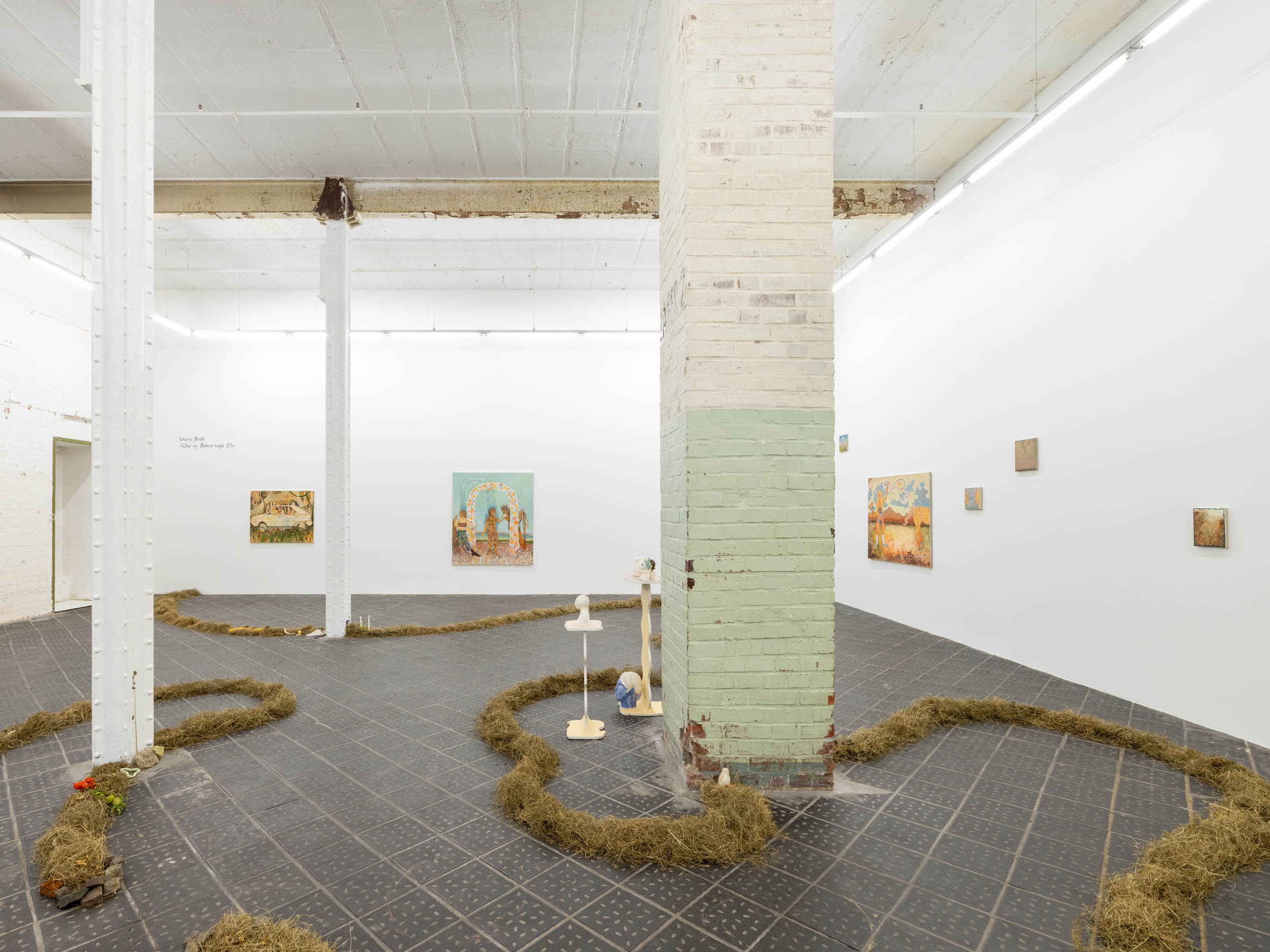
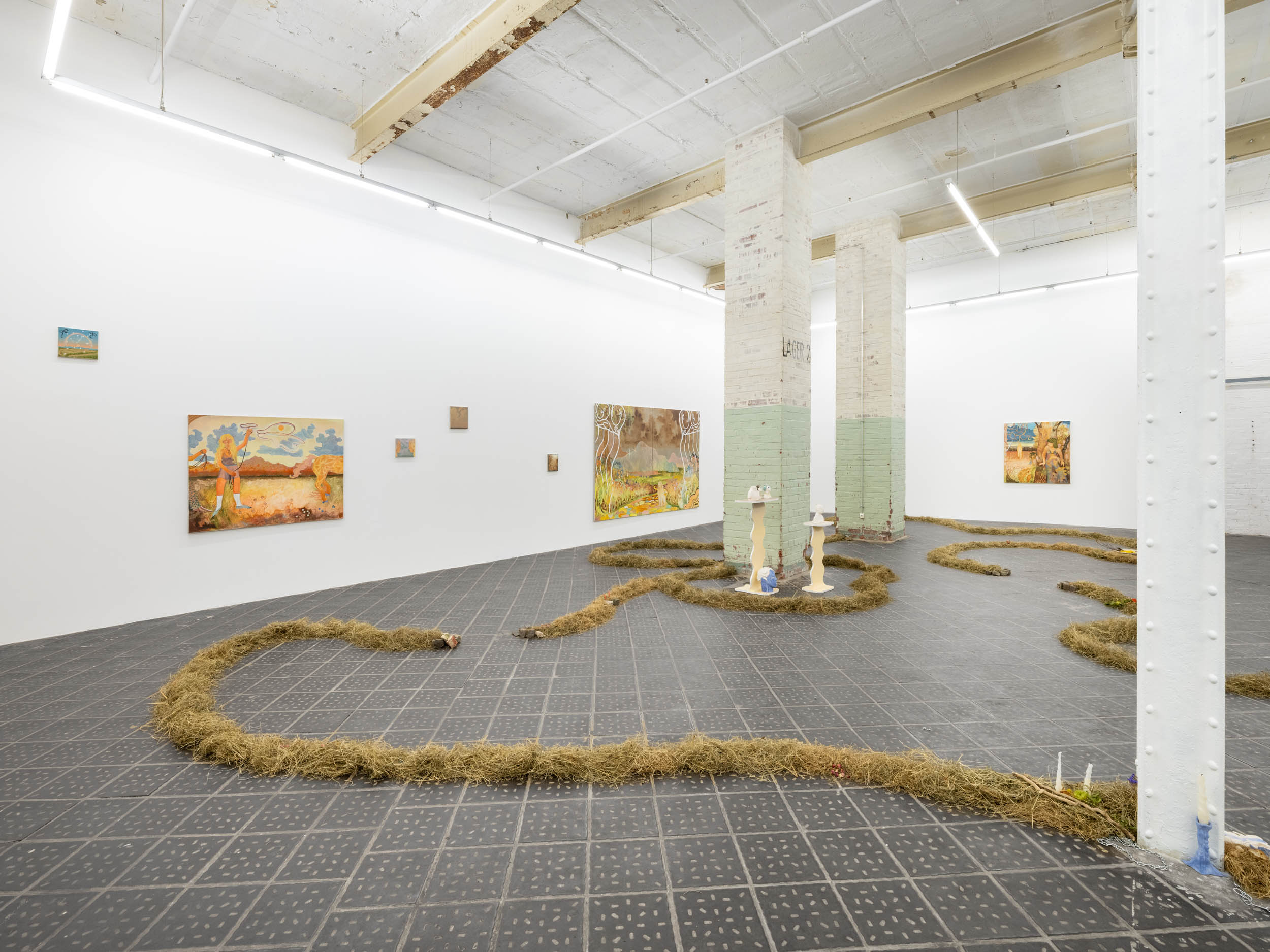
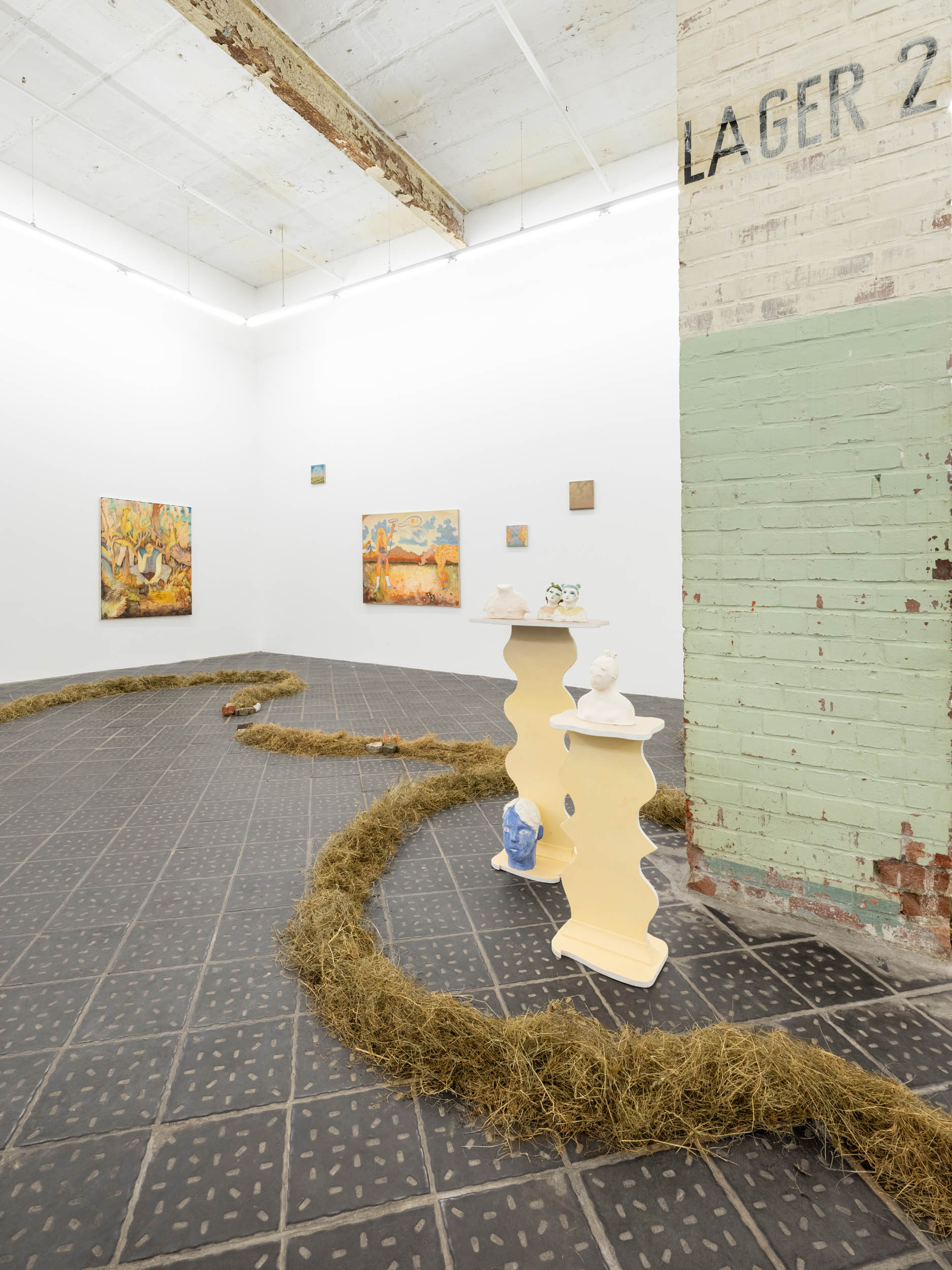
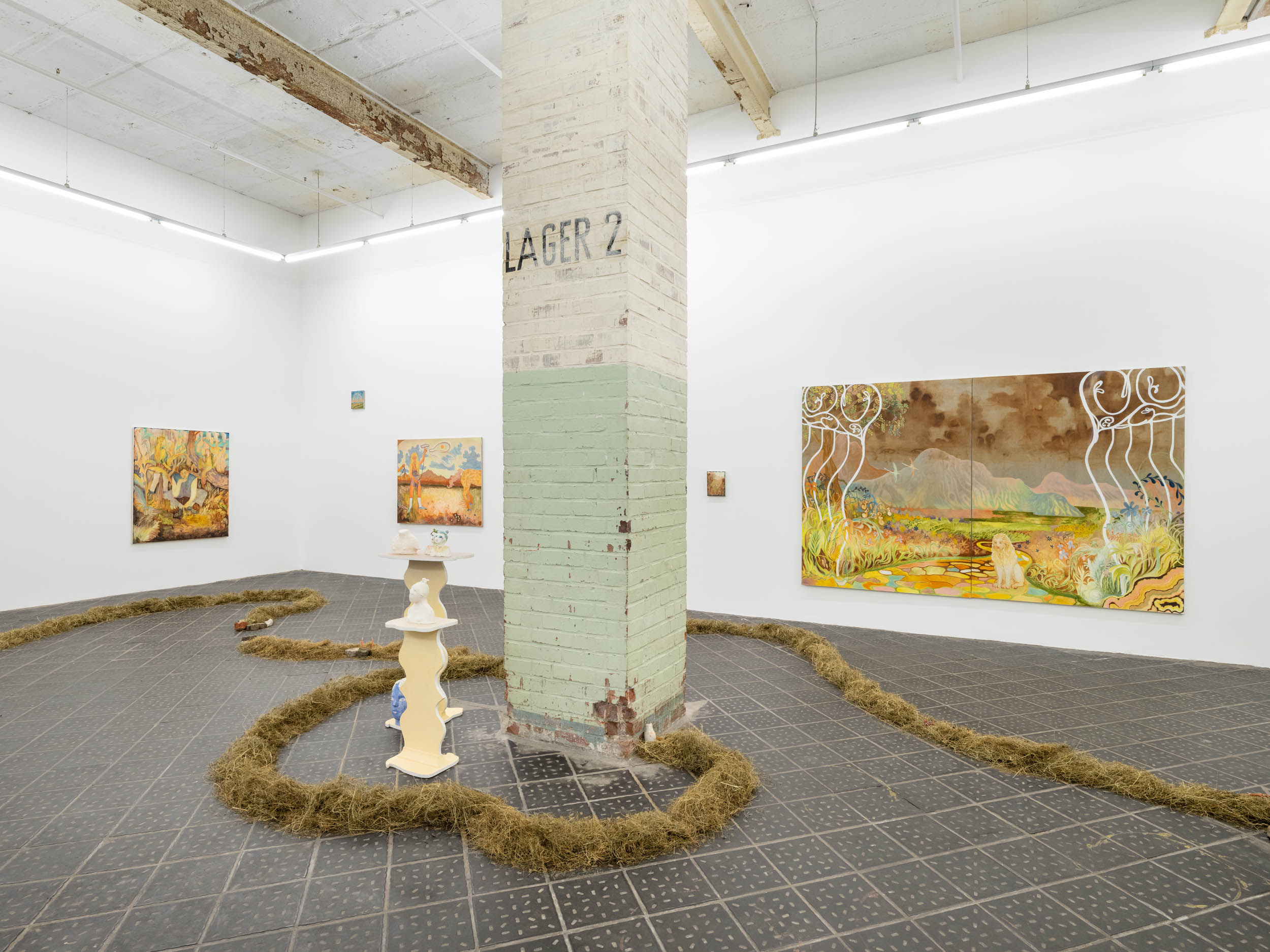
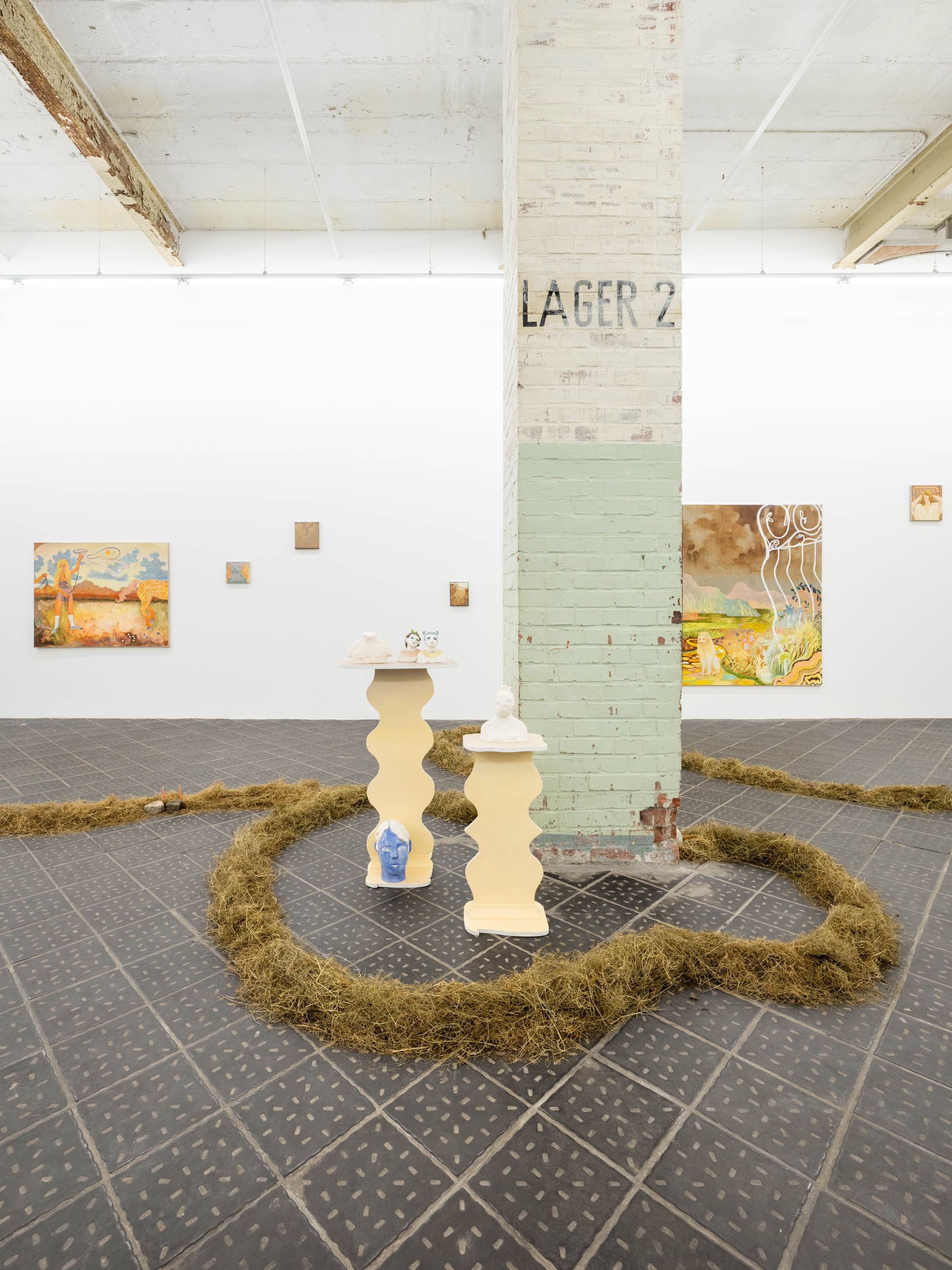
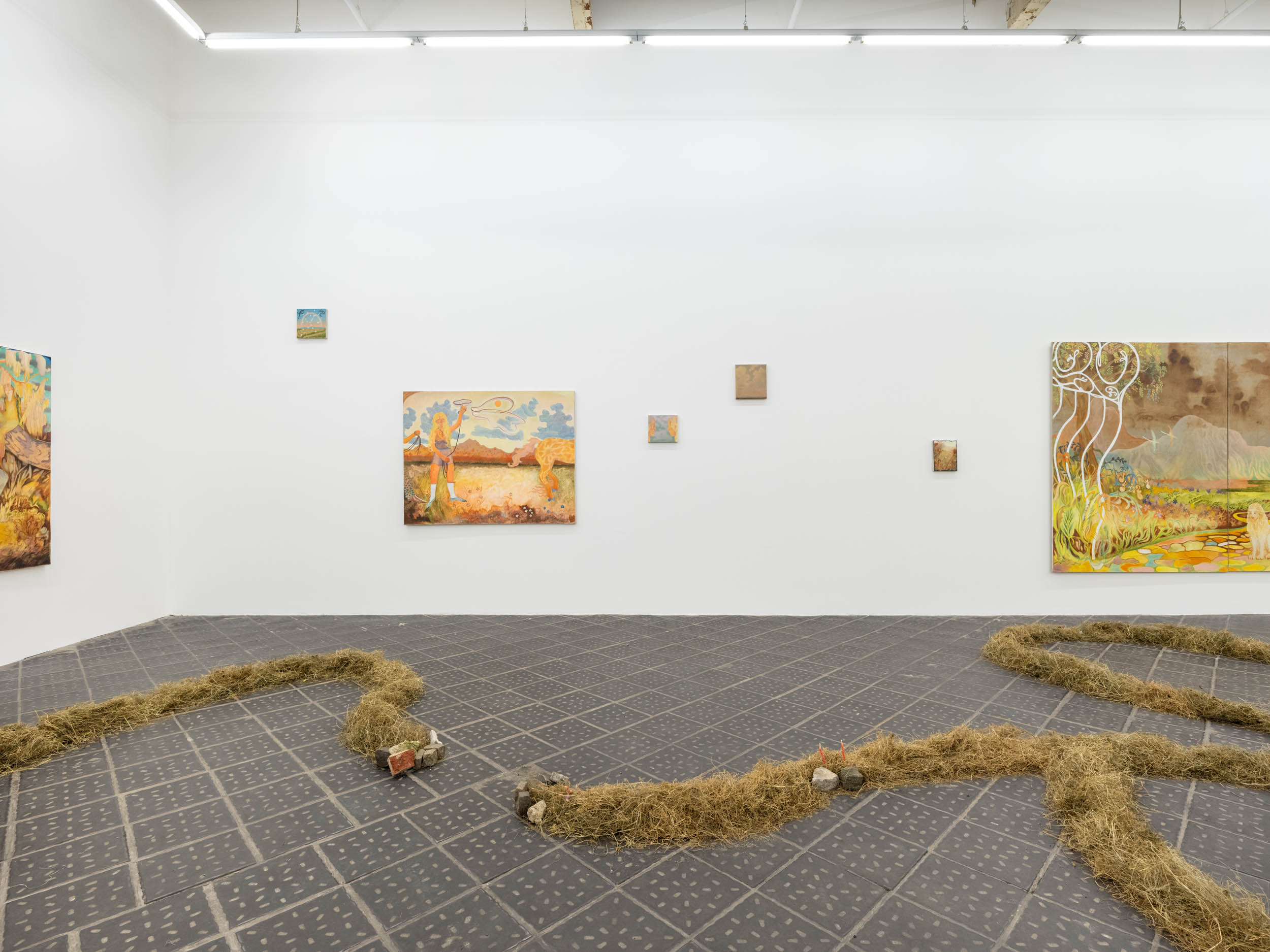
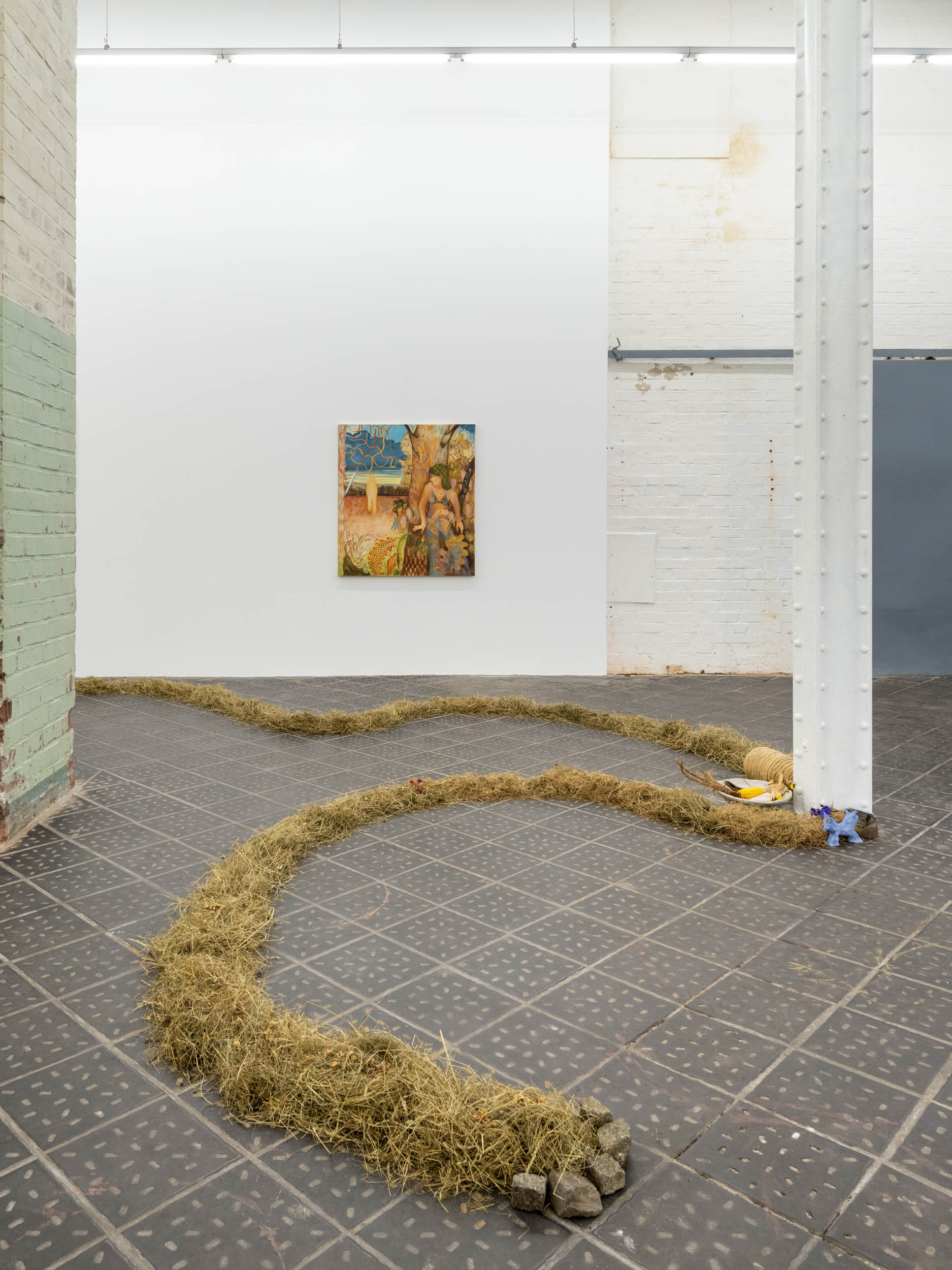
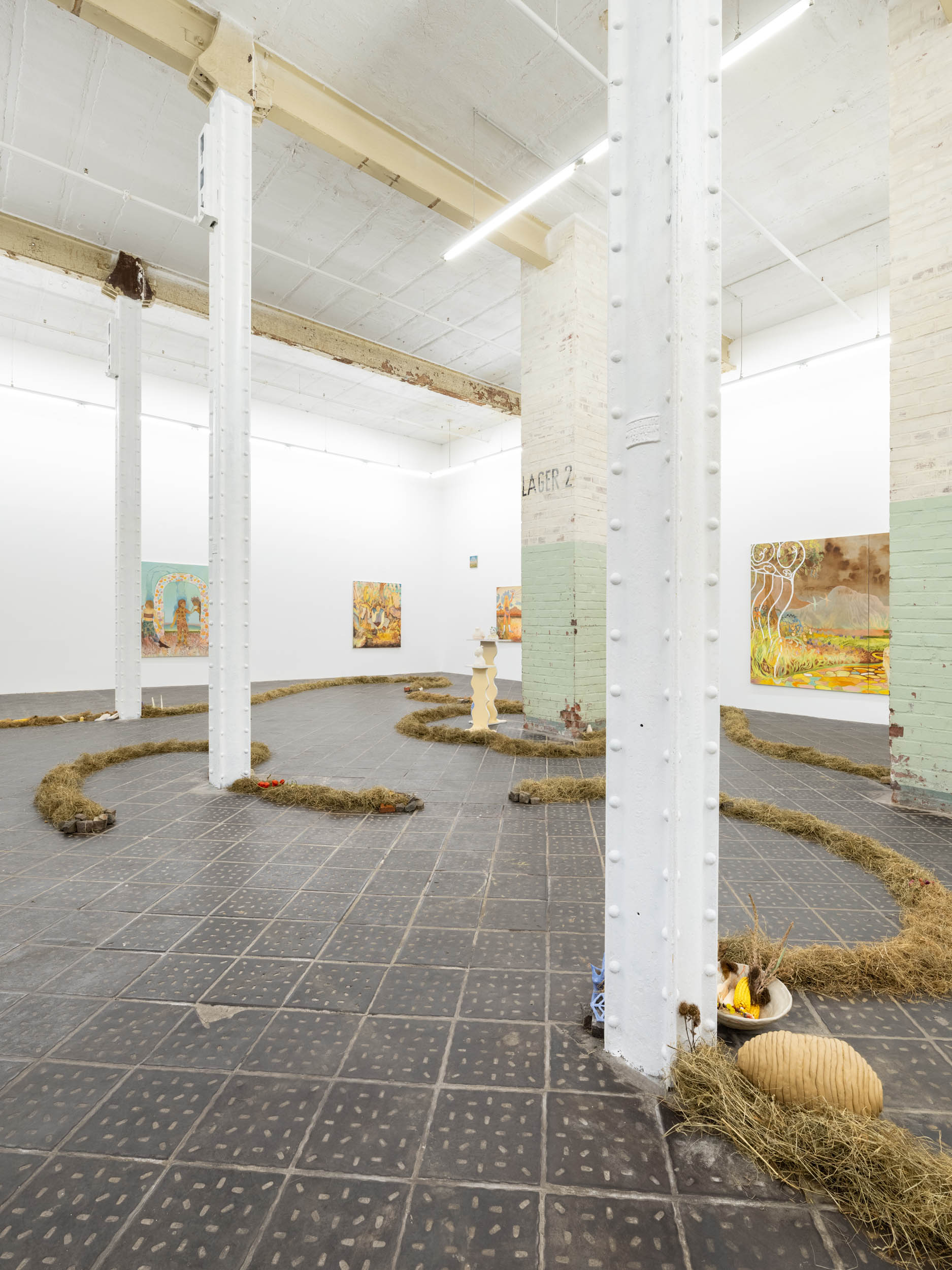
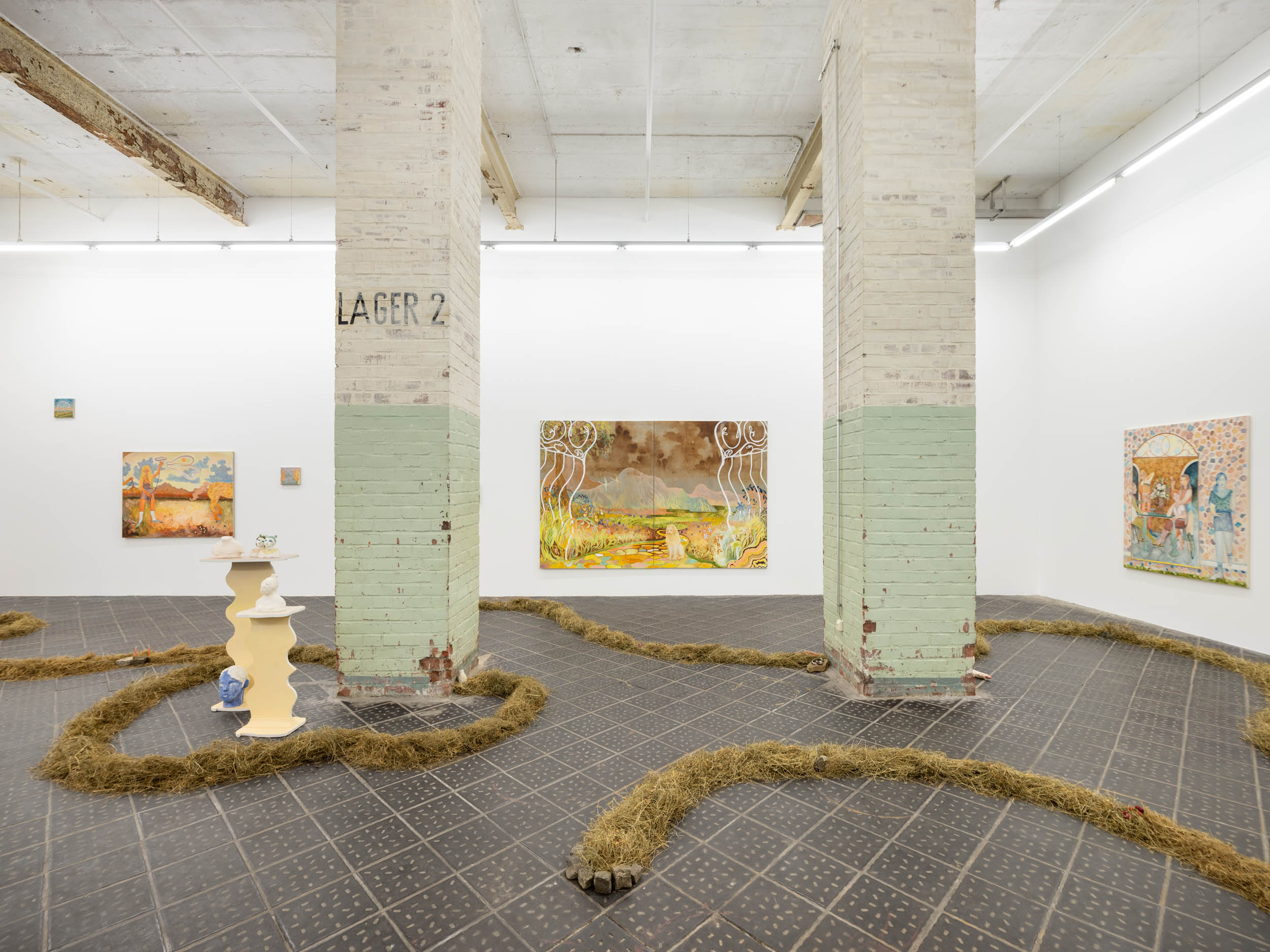
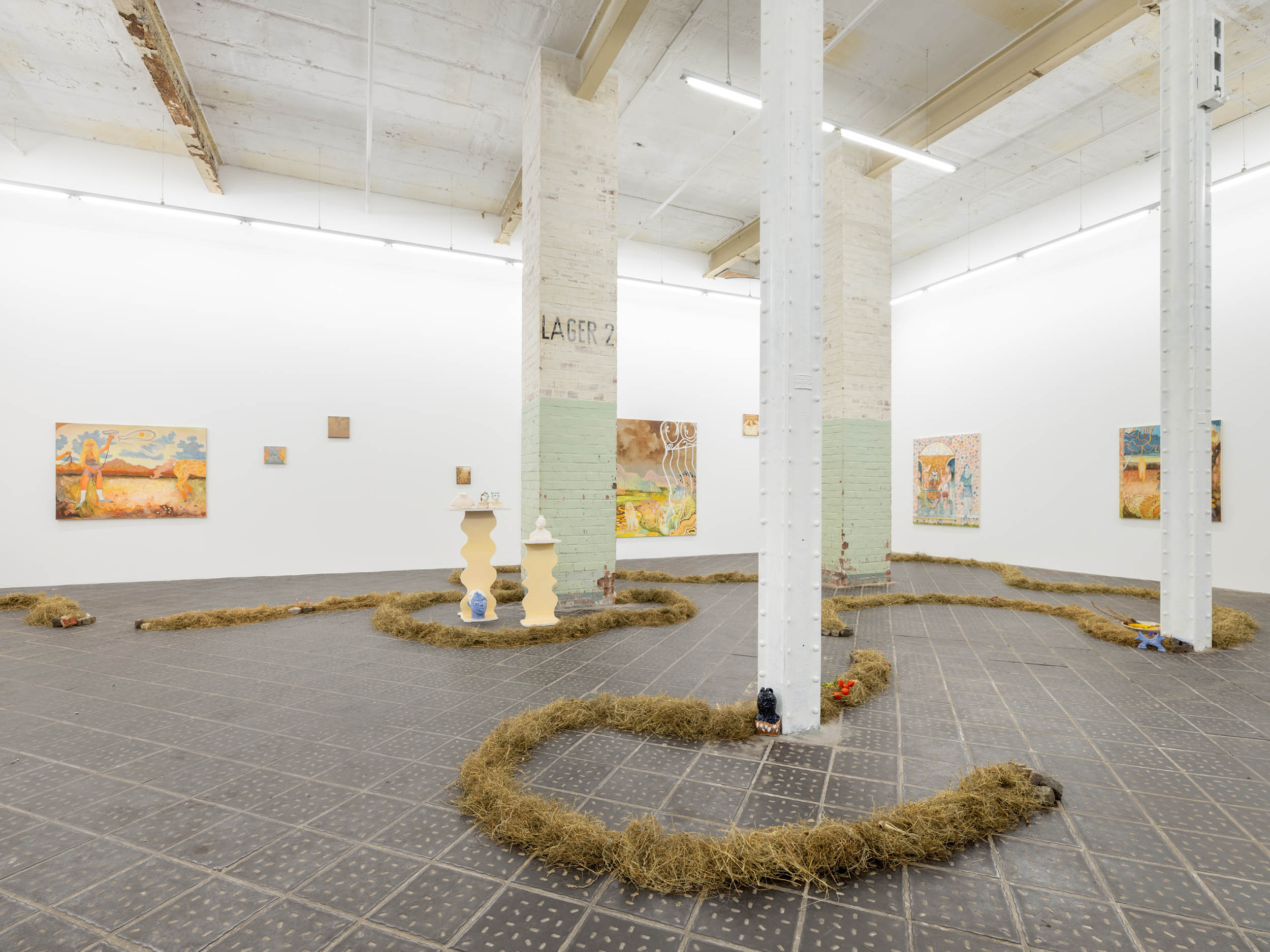
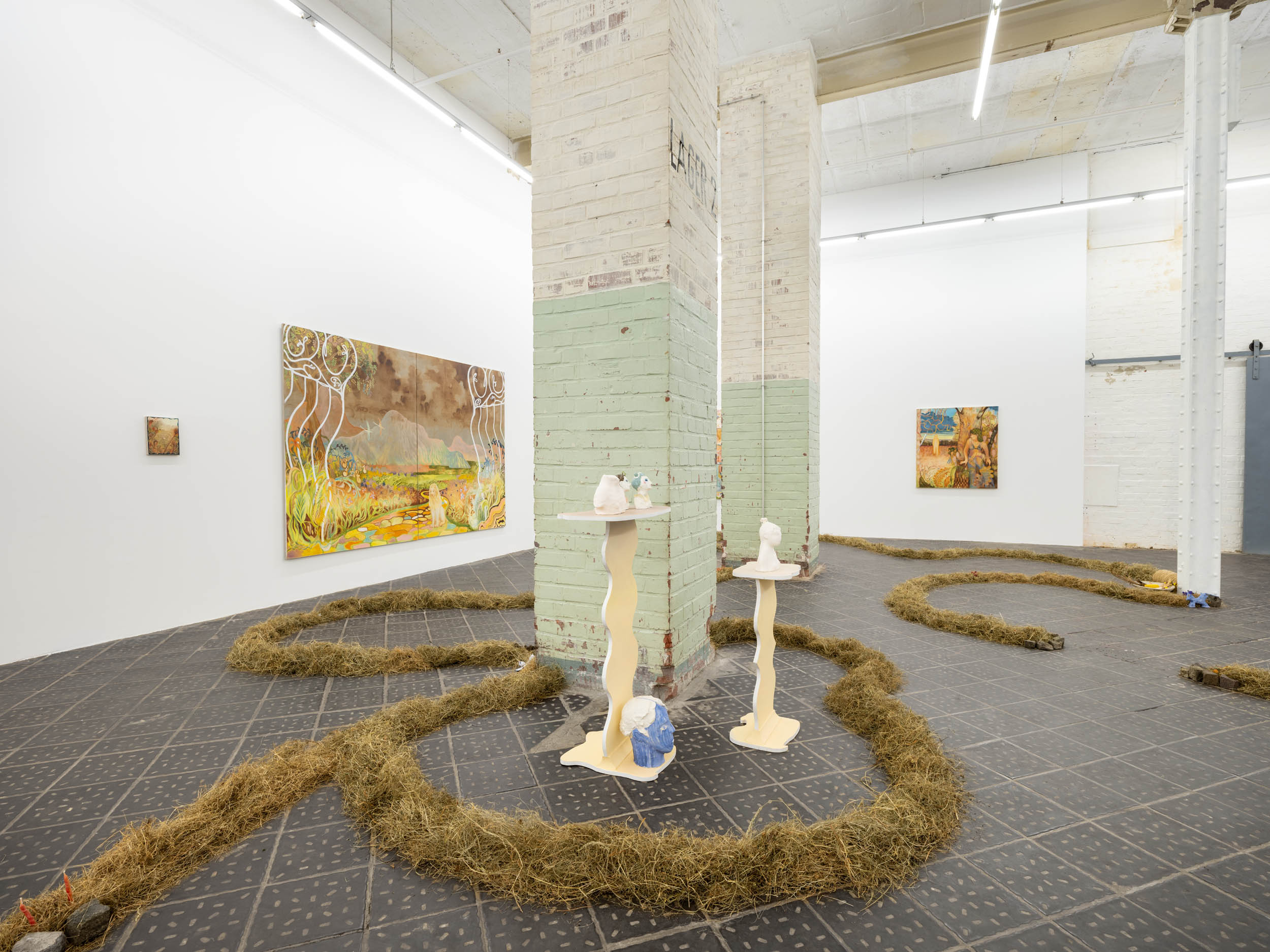
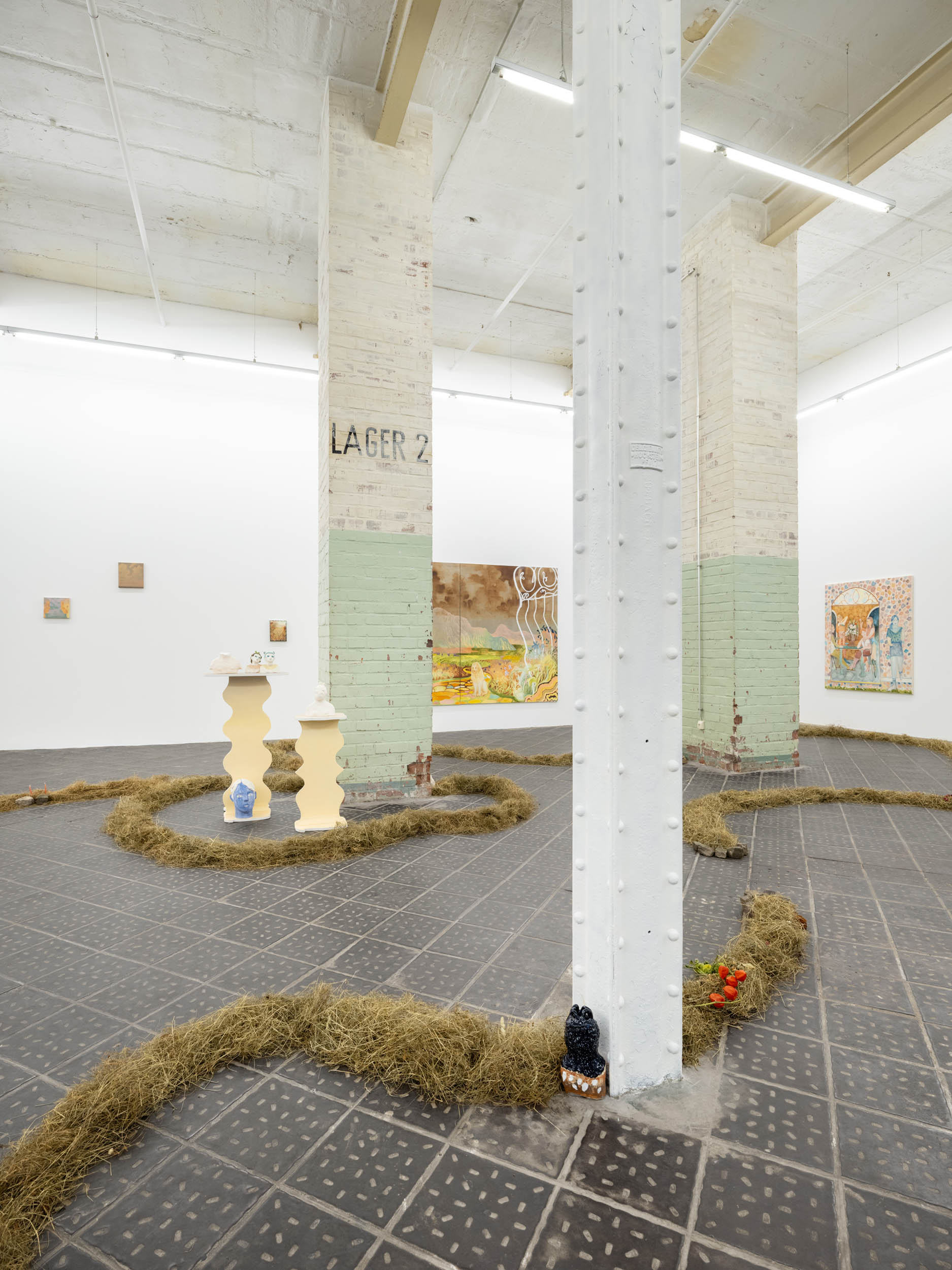
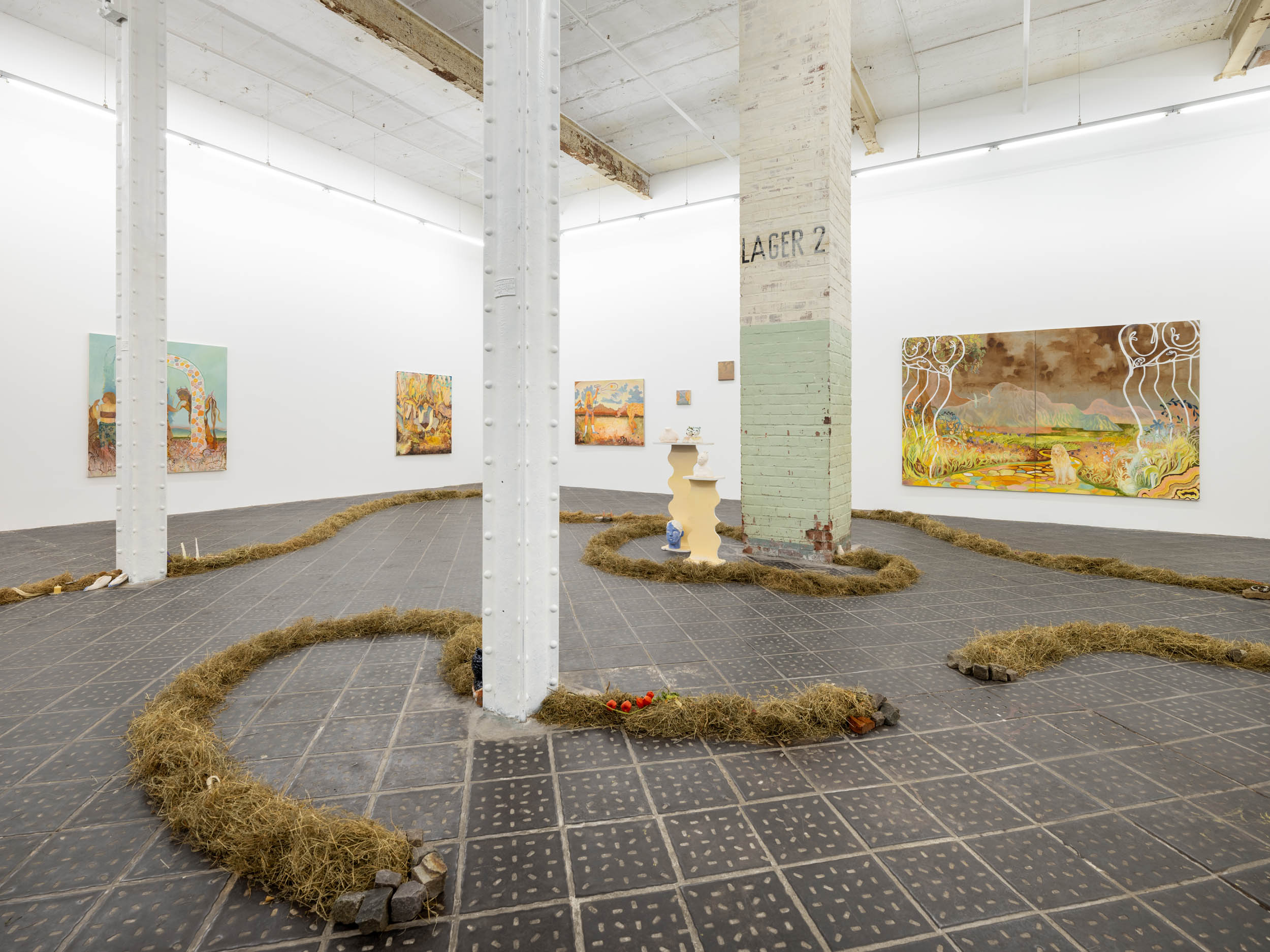
Text by Michael Klipphahn-Karge (TU Dresden)
Johanna Seidel’s painting depicts moments of transition. Transitional phases are often linked to rites of passage. Following Arnold van Gennep, the anthropologist Victor W. Turner has described these as moments of detachment from an existing order as an unstructured, ambiguous, and paradoxical state lacking in status. Initiation rites in secret societies, but also the approaching of motherhood, the act of marriage, and coming of age may be examples of these kinds of moments. Exhibition openings may also appear like rites of passage to artists and the public. The transition from a profane realm to a spiritual one can be marked, for example, by entering a gallery space, or even more so by the viewing of an artwork.
Seidel exposes the feeling of being in this unmarked state to the viewer as much as she encounters it herself. Based on her motifs, it becomes clear that the artist is not alone in transitioning from an existing order to a new one that is yet to become contoured. For her pictorial personnel is determined by sisterhood. Seidel’s rites and transitional scenarios are characterised by community. In doing so, she does not revive ideas of occult circles but fills the concept of the rite with the present and that of the secret society with a sense of community: reluctant archetypes act together. Women’s alliances, adolescents, beatniks, slackers, cowgirls, vamps, and nymphs move together on Johanna Seidel’s canvases through psychedelic natural spaces, drink together from springs, lay tarot cards, and seem interested above all in a collaborative form of communication.
In part, rites of passage also enter the picture through Seidel’s human protagonists who seem to merge with their environment, animals and plants in turn seem to transform into people: Flowers have eyes, branches become arms, and a lasso becomes a cloud formation. The distinction between ‘artificial’ and ‘natural’ is just as soft, as ideas of a world that obviously originates from the imagination of Johanna Seidel and her painted sisters. These conspiratorial communities, like their viewers standing in front of the artist’s paintings in the gallery space, are incessantly confronted with further passages: archways guarded by oracles in the shape of lions, the opening horizon and views of distant rocks recur, as do keyholes. Spatial ruptures and surges of colour traces condense into volumes of water and amorphous forms.
In the artist’s work, cultural structures first dissolve into anti-structures and come together again after a rite of passage as in Seidel’s conception of the world. This world as a pictorial narrative shows an alternative to the technologically shaped present. Similar to Flemish landscape painting, the artist’s ideas are based on a close observation of her surroundings, on a meaningful understanding of nature, and imagines us as a part of it: as sisters of nature. But the pioneering naturalism of Dutch landscape depictions is tipped into the unreal in Johanna Seidel’s painting in favour of the reconceptualisation of surrealist traditions. The sense of the unreal is what makes her work appear so magical. At the same time, Seidel figuratively captures the diffuse feeling that can arise when one’s own status dissolves in the face of imminent change - a transition, in other words - and begins to sort itself anew. It borders on magic that the artist is able to convey this feeling to the viewer. But according to Ruth Klüger, magic today is no longer an irrational, super-sensory talent, but an act that is collective and constituted by a shared experience - a dynamic. One could also say: sisterly thinking.